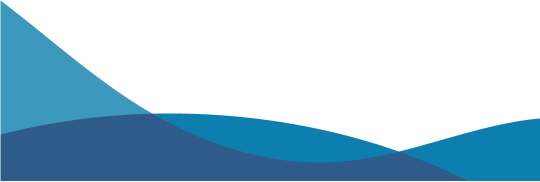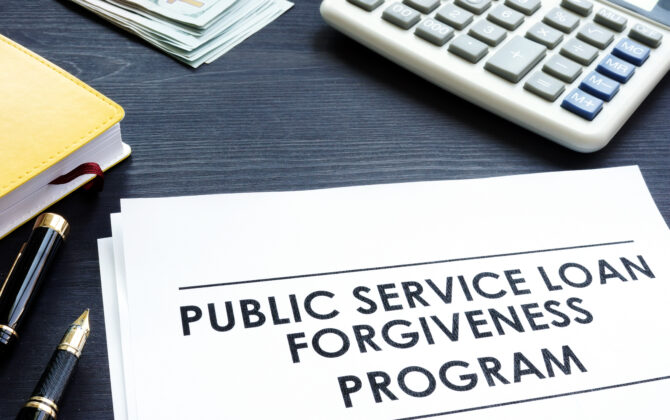To help public service workers get closer to forgiveness, in October 2021 the Department of Education (ED) announced limited-time changes to the Public Service Loan Forgiveness (PSLF) Program rules, referred to as the limited-time PSLF waiver. The limited-time PSLF waiver allowed borrowers to receive credit for past periods of repayment that would otherwise not have qualified for PSLF. Among other borrower accommodations, the waiver allowed all payments by student borrowers to count toward PSLF, regardless of loan program or payment plan. It also waived the requirement that payments be made in the full amount and on-time for all borrowers.
Although that limited-time PSLF waiver ended in October 2022, there are still programs and expansions available that federal student loan borrowers may be able to take advantage of, as well as the possibility of additional waivers in the future. Learn more below.
Public Service Loan Forgiveness explained
While the limited-time PSLF waiver has expired, the primary eligibility criteria and benefits of PSLF remain. To be eligible for the program, you must:
- be employed by a qualifying nonprofit organization or a US government organization at any level (federal, state, local, or tribal) – including US military service
- work full-time for that agency or organization
- have Federal Direct Loans (or consolidate other federal student loans into a Direct Loan)
- make 120 qualifying payments
Even with a thorough understanding of PSLF eligibility, the program requirements are dynamic and can be complicated to navigate on your own. Learn more about the ins and outs of PSLF here, or contact our GradFin student loan specialists1 for a free consultation to better understand your forgiveness options. For the most up-to-date information on the PSLF program, visit the Federal Student Aid website at studentaid.gov/publicservice.
Income-Driven Repayment (IDR)
Borrowers pursuing PSLF are typically enrolled in an Income-Driven Repayment (IDR) plan. IDR plans are designed to stabilize borrowers’ monthly student loan payments based on their discretionary income. Types of IDR programs include:
IDR Comparison Chart
|
Applications for SAVE, other IDR plans, and loan consolidation are available on http://studentaid.gov. You can also submit a PDF application to your loan servicer by uploading it to your servicer’s website, or mailing it to them. Expect a delay in processing times. The Education Department recommends checking its website for updates – there is no processing time estimate available. |
|
Plan |
Monthly Payments |
Repayment Period |
Status |
|
SAVE (formerly REPAYE) |
- 5% of discretionary income for Undergraduate Loans
- 10% of discretionary income for Graduate Loans
- Weighted average for borrowers who have both
|
- 10 years for low-balance borrowers (less than $12,000)
- 20 years for only undergraduate loans
- 25 years for any Graduate Loans
|
Replaced REPAYE |
|
Income-Based Repayment (IBR) |
- 10-15% of your discretionary income (and your spouse’s if filing jointly)
- Never more than federal 10-year Standard Repayment Plan amount
|
20-25 years, depending on when you become a new borrower |
Remains available but borrowers cannot select plan after 60 payments on REPAYE that occur on/after July 1, 2024 |
|
Income-Contingent Repayment (ICR) |
The lesser of the following: - 20% of your discretionary income or
- What you would pay on a repayment plan with a fixed payment over the course of 12 years, adjusted according to your income
|
25 years |
Not accepting enrollments for current students; only available to future borrowers with consolidated Parent PLUS loans |
|
Pay as You Earn (PAYE) |
- 10% of your discretionary income (and your spouse’s if filing jointly)
- Never more than federal 10-year Standard Repayment Plan amount
|
20 years |
Not accepting new enrollments |
An important distinction between the PSLF and the above IDR plans is that if you enroll in PSLF, you will qualify for forgiveness in ten years rather than the 20 to 25 years associated with most IDR plans. Stay up-to-date on the latest changes to IDR programs at studentaid.gov and whitehouse.gov.
How to determine PSLF eligibility
If you work full-time in the public sector and have federal student loans, you could be eligibile for PSLF.2 Common job types that qualify for PSLF include:
- Doctors employed by public healthcare systems
- Nurses employed by public healthcare systems
- Educators employed by public school systems such as K-12 schools and state universities
- First-responders such as police officers, firefighters, and EMTs
- Military personnel (active and veteran)
- Government personnel
To better understand your PSLF eligibility, take our quiz:
PSLF payments and applications
The PSLF program’s rules, complexity, and especially, fluidity around the federal student loan forgiveness relief plan, have led to confusion and misconceptions about applying to the program, making payments, and maintaining program eligibility.
To address these challenges, our student loan specialists are available to help you keep up with the changes that apply to your situation and give you peace of mind. Contact us for a free consultation and learn more at https://www.laurelroad.com/student-loan-forgiveness/.
Other forgiveness opportunities
If you missed the deadline for the limited-time PSLF waiver, you could still take advantage of other payment reduction and forgiveness opportunities, including the Income-Driven Repayment Account Adjustment, a one-time payment count adjustment for eligible borrowers enrolled in an IDR program. You could be eligible for the one-time account adjustment if:
- You have FFEL, Perkins, or Health Education Assistance Program loans; or,
- You have past periods of forbearance; or,
- You have past periods of deferment; or,
- Your federal loans have been in repayment for 20 (undergrad loans) or 25 years (graduate loans)
To learn more, schedule a free call with a student loan specialist. Another potential forgiveness opportunity is through Temporary Expanded Public Service Loan Forgiveness (TEPSLF).
Next steps
To pursue PSLF and find out if you qualify, you must provide paperwork, including an Employment Certification Form (ECF) filled out by each eligible employer in your work history. An ECF will need to be completed at least annually or whenever you change employers while enrolled in the program. It’s recommended to complete this step at studentaid.gov using the PSLF Help Tool. You can get the ECF from MOHELA’s site or elsewhere, but if it’s not generated by the Help Tool it will add several months of additional processing time.
If you have questions about next steps or how to qualify for PSLF, our student loan consultants can help you understand all your options and guide you through the process. Learn more here For the most up-to-date information regarding PSLF, go to studentaid.gov/pslf.




